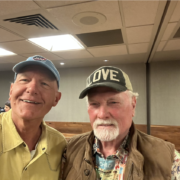The great thing about the sudden $5 pop is the price of oil since Monday is that it battle tests your portfolio. You really don't know what you own and the risks it entails until something like this comes along. I'll explain why.
For a start, you get a very clear idea of which of your assets are of the "RISK ON" variety, and which are of the "RISK OFF" persuasion. This is easier said than done because asset classes often change gender, flipping from "RISK ON" to "RISK OFF" without warning. Knowing which is which is crucial in hedging portfolios and measuring your risk. It is not unusual for a trader to believe he has a safe bet on, only to watch his portfolio completely blow up because the cross asset relationships have changed.
Look at Tuesday's market action. Traditional "RISK ON" assets, like stocks (SPY), got pounded. The traditional flight to safety assets, such as bonds (TLT) and gold, did well. This is where a typical balanced portfolio does well. Oil (USO) is usually a "RISK ON" asset, but not this time. Fears of a supply interruption, no matter how unfounded they may be, sent prices for Texas tea through the roof. On this round, oil clearly fell out of the "RISK ON"/"RISK OFF" model.
Not only do assets show their true colors in conditions like this. They also demonstrate their character. Look at the gold/silver ratio. Historically, silver (SLV) moves twice as fast has gold (GLD), with double the beta. Since the last low, it has doubled gold's move. When the barbarous relic gained 17% from the recent $1,175 low, silver roared some 36%. Thus the relationships have been maintained.
How did my own model trading portfolio do? I took it on the nose with my oil short, moving from a profit to a loss. But my short positions in the yen and the euro did well, nearly offsetting those losses. So overall, my 35% year to date performance has been protected, and the volatility kept down. This is whyy I always try to run a book of counterbalancing "RISK ON" and "RISK OFF" positions, or stay very small. You should do the same.









